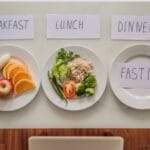Introduction
The ketogenic diet, commonly known as the keto diet, has gained significant popularity for its potential benefits in weight loss, improved energy levels, and overall health. This low-carb, high-fat diet encourages the body to enter a state of ketosis, where it burns fat for fuel instead of carbohydrates. While the keto diet can be effective, it also requires careful attention to maintaining the right balance of electrolytes. Electrolytes are crucial for many bodily functions, and an imbalance can lead to unpleasant symptoms, often referred to as the “keto flu.” In this article, we will explore what electrolytes are, why they are important on the keto diet, and how to ensure you get enough of them to stay healthy and feel great.
What Are Electrolytes?
Electrolytes are minerals in your body that carry an electric charge. They are found in your blood, urine, tissues, and other bodily fluids. These minerals are essential for various bodily functions, including:
- Maintaining fluid balance: Electrolytes help regulate the amount of water in and around your cells.
- Nerve function: They are crucial for transmitting electrical signals between nerves.
- Muscle function: Electrolytes facilitate muscle contraction and relaxation.
- pH balance: They help maintain the body’s acid-base balance.
The main electrolytes in the human body are sodium, potassium, magnesium, calcium, chloride, phosphate, and bicarbonate. For those on a keto diet, the most critical electrolytes to focus on are sodium, potassium, and magnesium.
Why Are Electrolytes Important on the Keto Diet?
When you start the keto diet, your body undergoes significant changes, particularly in how it handles carbohydrates and stores water. These changes can lead to a loss of electrolytes, making it essential to monitor and replenish them regularly.
Carbohydrate Reduction and Electrolyte Loss
Carbohydrates hold water in your body. When you reduce your carb intake, your body releases stored water, leading to increased urination. This process can result in the loss of electrolytes, particularly sodium and potassium.
Ketosis and Increased Urination
Entering ketosis further increases the frequency of urination, as your kidneys expel more water. This is because ketones, the byproducts of fat metabolism, are excreted in urine. With this increased urination, electrolytes are also flushed out.
Avoiding the Keto Flu
The initial phase of the keto diet, often called the “keto flu,” can cause symptoms such as headaches, fatigue, muscle cramps, and irritability. These symptoms are often linked to electrolyte imbalances. Ensuring you get enough electrolytes can help prevent or alleviate the keto flu.
Key Electrolytes on the Keto Diet
1. Sodium
Role in the Body:
- Regulates fluid balance
- Supports nerve function
- Helps with muscle contractions
Symptoms of Deficiency:
- Headaches
- Fatigue
- Dizziness
- Muscle cramps
How to Get Enough Sodium:
- Add salt to your food. Sea salt or Himalayan pink salt can be excellent choices.
- Consume salty foods like broth, pickles, olives, and bacon.
- Consider electrolyte supplements if necessary.
2. Potassium
Role in the Body:
- Maintains fluid and electrolyte balance
- Supports nerve function
- Helps muscles contract and relax
Symptoms of Deficiency:
- Weakness
- Muscle cramps
- Irregular heartbeat
- Constipation
How to Get Enough Potassium:
- Eat potassium-rich foods like avocados, spinach, mushrooms, and nuts.
- Consider using a potassium supplement if you find it challenging to get enough through diet alone.
3. Magnesium
Role in the Body:
- Supports muscle and nerve function
- Helps regulate blood sugar levels
- Aids in energy production
- Supports bone health
Symptoms of Deficiency:
- Muscle cramps
- Fatigue
- Nausea
- Weakness
How to Get Enough Magnesium:
- Include magnesium-rich foods in your diet, such as nuts, seeds, leafy green vegetables, and dark chocolate.
- Consider taking a magnesium supplement, especially if you experience muscle cramps or difficulty sleeping.
Tips for Maintaining Electrolyte Balance on Keto
1. Stay Hydrated
Proper hydration is essential for maintaining electrolyte balance. Aim to drink plenty of water throughout the day. You can also incorporate electrolyte-rich beverages, such as coconut water or electrolyte drinks, to help replenish lost minerals.
2. Monitor Your Symptoms
Pay attention to how you feel, especially during the initial stages of the keto diet. Symptoms like headaches, fatigue, muscle cramps, and irritability may indicate an electrolyte imbalance. Adjust your intake of sodium, potassium, and magnesium accordingly.
3. Plan Your Meals
Plan your meals to include a variety of foods rich in electrolytes. For example, a salad with avocado, spinach, nuts, and a sprinkle of sea salt can provide a good balance of essential minerals.
4. Use Electrolyte Supplements if Necessary
If you find it challenging to meet your electrolyte needs through diet alone, consider using electrolyte supplements. These supplements can provide a convenient and effective way to maintain the right balance of sodium, potassium, and magnesium.
Electrolyte-Rich Foods to Include in Your Keto Diet
Incorporating foods that are naturally high in electrolytes can help you maintain the right balance while following the keto diet. Here are some excellent choices:
Sodium-Rich Foods:
- Broth (especially bone broth)
- Pickles and pickle juice
- Olives
- Bacon
- Salted nuts and seeds
Potassium-Rich Foods:
- Avocados
- Spinach
- Mushrooms
- Nuts (especially almonds and pistachios)
- Salmon
Magnesium-Rich Foods:
- Nuts and seeds (such as almonds, cashews, and pumpkin seeds)
- Leafy green vegetables (such as spinach and kale)
- Dark chocolate
- Fish (such as mackerel and salmon)
- Avocados
Sample Meal Plan for Electrolyte Balance on Keto
Here’s a sample meal plan to help you incorporate electrolyte-rich foods into your keto diet:
Breakfast:
- Scrambled eggs with spinach and mushrooms
- Avocado slices with a sprinkle of sea salt
- A cup of black coffee or tea
Lunch:
- Spinach salad with grilled chicken, avocado, nuts, and olive oil dressing
- A side of pickles or olives
Snack:
- A handful of salted nuts (such as almonds or cashews)
- A piece of dark chocolate (70% cocoa or higher)
Dinner:
- Baked salmon with a side of roasted broccoli and cauliflower
- A serving of sautéed spinach with garlic and olive oil
- A glass of bone broth
Evening Snack:
- A small bowl of mixed berries with a dollop of full-fat Greek yogurt
Conclusion
Maintaining the right balance of electrolytes is crucial for a successful and healthy keto diet. Sodium, potassium, and magnesium play vital roles in supporting your body’s functions and preventing the symptoms of the keto flu. By incorporating electrolyte-rich foods into your diet, staying hydrated, and monitoring your symptoms, you can ensure that you get enough of these essential minerals. If needed, consider using electrolyte supplements to help meet your daily requirements. With the right approach, you can enjoy the benefits of the keto diet while keeping your body balanced and energized.


